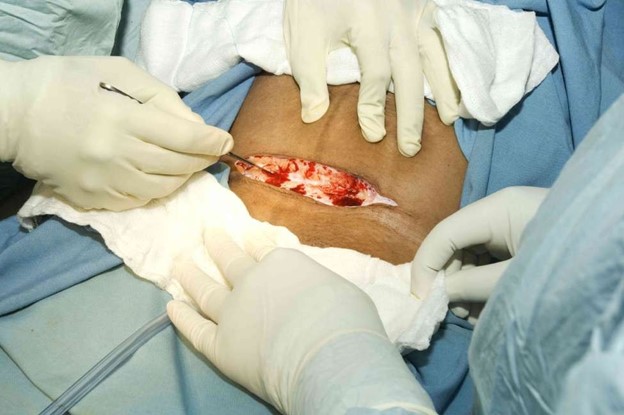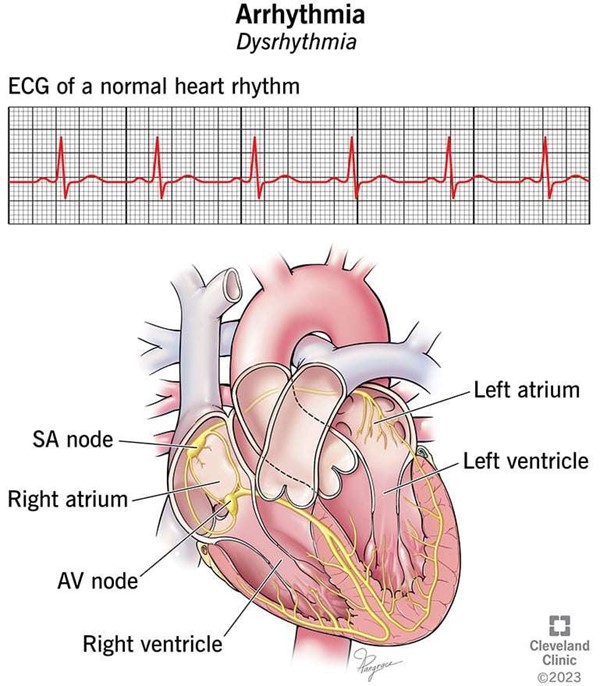A nurse is assisting with the care of a client who is in labor with ruptured membranes and has herpes simplex virus with active lesions.
Which of the following actions should the nurse take?
Begin an amnioinfusion for the client.
Prepare the client for a cesarean birth.
Administer ampicillin IV to the client.
Initiate an oxytocin infusion for the client.
The Correct Answer is B
Prepare the client for a cesarean birth.

This is because the client has herpes simplex virus with active lesions, which can be transmitted to the newborn during vaginal delivery and cause serious complications such as neonatal herpes infection. A cesarean birth can prevent this transmission and protect the newborn’s health.
Choice A is wrong because an amnioinfusion is a procedure that involves infusing fluid into the amniotic cavity to increase the volume of amniotic fluid and reduce cord compression.
It is not indicated for a client with herpes simplex virus with active lesions.
Choice C is wrong because ampicillin is an antibiotic that is used to treat bacterial infections, not viral infections such as herpes simplex virus.
Ampicillin will not prevent the transmission of herpes simplex virus to the newborn.
Choice D is wrong because oxytocin is a hormone that stimulates uterine contractions and can be used to augment or induce labor.
It is not indicated for a client with herpes simplex virus with active lesions, as it can increase the risk of transmission to the newborn by prolonging the exposure to infected genital secretions.
Nursing Test Bank
Naxlex Comprehensive Predictor Exams
Related Questions
Correct Answer is D
Explanation
Dysrhythmia is an abnormal heart rhythm that can be a sign of severe lithium toxicity.

Lithium toxicity can occur when a person takes too much lithium, a mood- stabilizing medication used to treat bipolar disorder and major depressive disorder.
Choice A is wrong because hypoglycemia is not a symptom of lithium toxicity. Hypoglycemia is low blood sugar that can cause symptoms such as shakiness, sweating, hunger, and confusion.
Choice B is wrong because excess salivation is not a symptom of lithium toxicity. Excess salivation can be caused by various factors, such as infections, medications, or nerve damage.
Choice C is wrong because urinary retention is not a symptom of lithium toxicity. Urinary retention is the inability to empty the bladder completely, which can cause pain, discomfort, and infection. Lithium toxicity can actually cause increased urine output, not decreased.
Normal ranges for blood lithium levels are 0.6 to 1.2 mEq/L for maintenance therapy and 0.8 to 1.5 mEq/L for acute therapy. Levels above 1.5 mEq/L can cause mild to moderate toxicity, and levels above 2.0 mEq/L can cause severe toxicity. Levels above 3.0 mEq/L are considered a medical emergency.
Correct Answer is C
Explanation
The nurse should explain that the injection is administered in order to prevent vitamin K deficiency bleeding (VKDB) in the newborn. Vitamin K is needed for blood clotting, but newborn babies have very low levels of vitamin K in their bodies at birth because only small amounts of the vitamin pass through the placenta and breast milk. VKDB can cause life-threatening bleeding in various parts of the body, such as the brain, intestines, or skin. VKDB can be classified into early-onset, classic, or late- onset depending on the time of presentation after birth. The most effective way to prevent VKDB is to give a single intramuscular dose of 0.5 to 1 mg of vitamin K to all newborn infants within 6 hours of birth.
Choice A is wrong because sepsis is not caused by vitamin K deficiency, but by bacterial infection.
Choice B is wrong because tachypnea is not caused by vitamin K deficiency, but by respiratory distress or other conditions.
Choice D is wrong because jaundice is not caused by vitamin K deficiency, but by high levels of bilirubin in the blood.
Whether you are a student looking to ace your exams or a practicing nurse seeking to enhance your expertise , our nursing education contents will empower you with the confidence and competence to make a difference in the lives of patients and become a respected leader in the healthcare field.
Visit Naxlex, invest in your future and unlock endless possibilities with our unparalleled nursing education contents today
Report Wrong Answer on the Current Question
Do you disagree with the answer? If yes, what is your expected answer? Explain.
Kindly be descriptive with the issue you are facing.
